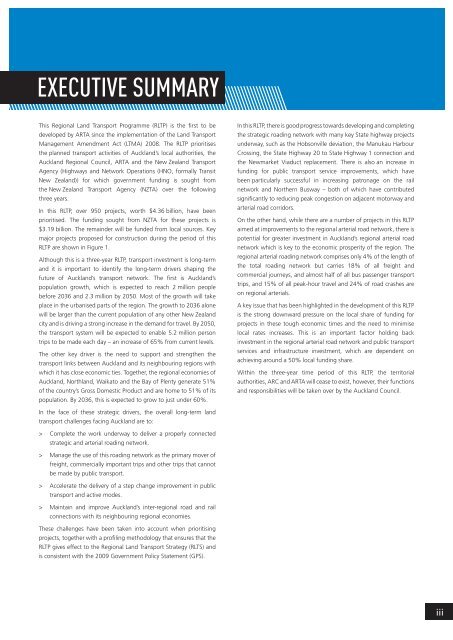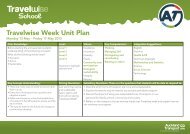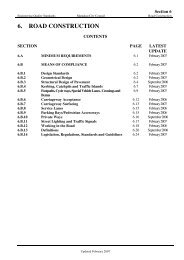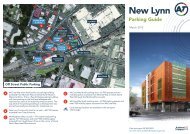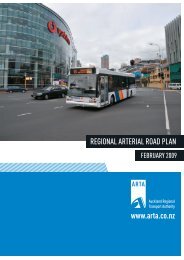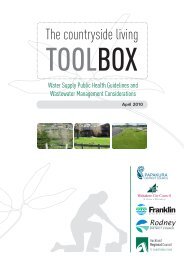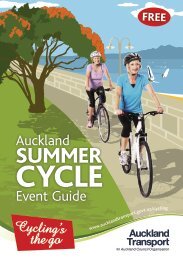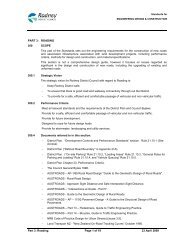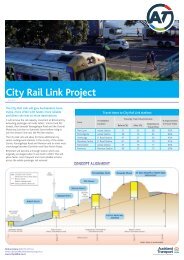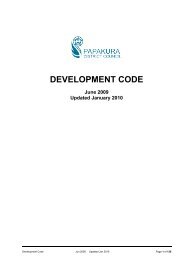Regional Land Transport Programme 2009 - 2010 (2MB) - Auckland ...
Regional Land Transport Programme 2009 - 2010 (2MB) - Auckland ...
Regional Land Transport Programme 2009 - 2010 (2MB) - Auckland ...
Create successful ePaper yourself
Turn your PDF publications into a flip-book with our unique Google optimized e-Paper software.
EXECUTIVE SUMMARY<br />
This <strong>Regional</strong> <strong>Land</strong> <strong>Transport</strong> <strong>Programme</strong> (RLTP) is the first to be<br />
developed by ARTA since the implementation of the <strong>Land</strong> <strong>Transport</strong><br />
Management Amendment Act (LTMA) 2008. The RLTP prioritises<br />
the planned transport activities of <strong>Auckland</strong>’s local authorities, the<br />
<strong>Auckland</strong> <strong>Regional</strong> Council, ARTA and the New Zealand <strong>Transport</strong><br />
Agency (Highways and Network Operations (HNO, formally Transit<br />
New Zealand)) for which government funding is sought from<br />
the New Zealand <strong>Transport</strong> Agency (NZTA) over the following<br />
three years.<br />
In this RLTP, over 950 projects, worth $4.36 billion, have been<br />
prioritised. The funding sought from NZTA for these projects is<br />
$3.19 billion. The remainder will be funded from local sources. Key<br />
major projects proposed for construction during the period of this<br />
RLTP are shown in Figure 1.<br />
Although this is a three-year RLTP, transport investment is long-term<br />
and it is important to identify the long-term drivers shaping the<br />
future of <strong>Auckland</strong>’s transport network. The first is <strong>Auckland</strong>’s<br />
population growth, which is expected to reach 2 million people<br />
before 2036 and 2.3 million by 2050. Most of the growth will take<br />
place in the urbanised parts of the region. The growth to 2036 alone<br />
will be larger than the current population of any other New Zealand<br />
city and is driving a strong increase in the demand for travel. By 2050,<br />
the transport system will be expected to enable 5.2 million person<br />
trips to be made each day – an increase of 65% from current levels.<br />
The other key driver is the need to support and strengthen the<br />
transport links between <strong>Auckland</strong> and its neighbouring regions with<br />
which it has close economic ties. Together, the regional economies of<br />
<strong>Auckland</strong>, Northland, Waikato and the Bay of Plenty generate 51%<br />
of the country’s Gross Domestic Product and are home to 51% of its<br />
population. By 2036, this is expected to grow to just under 60%.<br />
In this RLTP, there is good progress towards developing and completing<br />
the strategic roading network with many key State highway projects<br />
underway, such as the Hobsonville deviation, the Manukau Harbour<br />
Crossing, the State Highway 20 to State Highway 1 connection and<br />
the Newmarket Viaduct replacement. There is also an increase in<br />
funding for public transport service improvements, which have<br />
been particularly successful in increasing patronage on the rail<br />
network and Northern Busway – both of which have contributed<br />
significantly to reducing peak congestion on adjacent motorway and<br />
arterial road corridors.<br />
On the other hand, while there are a number of projects in this RLTP<br />
aimed at improvements to the regional arterial road network, there is<br />
potential for greater investment in <strong>Auckland</strong>’s regional arterial road<br />
network which is key to the economic prosperity of the region. The<br />
regional arterial roading network comprises only 4% of the length of<br />
the total roading network but carries 18% of all freight and<br />
commercial journeys, and almost half of all bus passenger transport<br />
trips, and 15% of all peak-hour travel and 24% of road crashes are<br />
on regional arterials.<br />
A key issue that has been highlighted in the development of this RLTP<br />
is the strong downward pressure on the local share of funding for<br />
projects in these tough economic times and the need to minimise<br />
local rates increases. This is an important factor holding back<br />
investment in the regional arterial road network and public transport<br />
services and infrastructure investment, which are dependent on<br />
achieving around a 50% local funding share.<br />
Within the three-year time period of this RLTP, the territorial<br />
authorities, ARC and ARTA will cease to exist, however, their functions<br />
and responsibilities will be taken over by the <strong>Auckland</strong> Council.<br />
In the face of these strategic drivers, the overall long-term land<br />
transport challenges facing <strong>Auckland</strong> are to:<br />
><br />
><br />
><br />
><br />
Complete the work underway to deliver a properly connected<br />
strategic and arterial roading network.<br />
Manage the use of this roading network as the primary mover of<br />
freight, commercially important trips and other trips that cannot<br />
be made by public transport.<br />
Accelerate the delivery of a step change improvement in public<br />
transport and active modes.<br />
Maintain and improve <strong>Auckland</strong>’s inter-regional road and rail<br />
connections with its neighbouring regional economies.<br />
These challenges have been taken into account when prioritising<br />
projects, together with a profiling methodology that ensures that the<br />
RLTP gives effect to the <strong>Regional</strong> <strong>Land</strong> <strong>Transport</strong> Strategy (RLTS) and<br />
is consistent with the <strong>2009</strong> Government Policy Statement (GPS).<br />
iii


